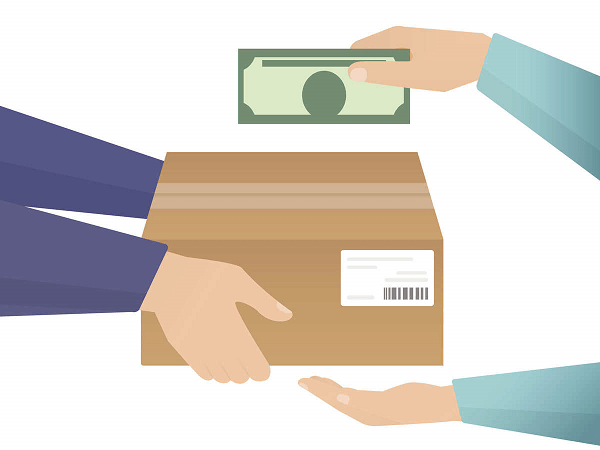What is the full form of CODCOD: Cash On DeliveryIn a cash-on-delivery (COD) transaction, the recipient pays for the item with cash rather than utilizing credit at the time of delivery. The conditions and allowed methods of payment change depending on the purchase agreement's payment clauses. As delivery may accept cash, cheques, or electronic payment, cash on delivery is also known as collect on delivery. 
Knowledge of Cash on Delivery (COD)A cash-on-delivery transaction may take several forms and have various effects on a company's accounting. Under generally accepted accounting rules, public corporations must adopt the accrual accounting technique (GAAP). With accrual accounting, a business records payments in accounts receivable if they are delayed and records revenue at the moment of the transaction. Private businesses can either utilize accrual accounting or cash accounting. Cash accounting requires the business to hold off on recording a transaction as revenue until the company receives payment. When a customer buys something from immediately available inventory from an in-person merchant, payment is taken in the form of cash on delivery at the time of sale. This results in a shorter accounts receivable period and greater efficiency under the accrual accounting technique. Companies can set up COD shipment, which enables the client to postpone payment until the time of delivery, for longer-term accounts receivable agreements. COD can be utilized on some mail-order websites, including eBay, to reduce the possibility of fraud between buyers and sellers. In general, COD doesn't demand buyer payment until they've received their order. Cash on Delivery's AdvantagesIn-person COD makes it easier for many businesses to accept payments right away for goods and services. This is a substantial accounting benefit because it can significantly reduce a company's days receivable. 
When a business offers COD shipment, it voluntarily gives the consumer additional time to pay with a little less risk than with a credit transaction. Delivery times for COD are often faster than for normal invoicing. This is advantageous since a middleman requires payment at delivery from the customer. Customers can gather the funds to make a complete payment with COD shipment. Yet, COD shipment ups the chance that a client won't make an adequate payment plan, and the order would need to be returned. Returning goods hurts the retailer because they don't increase earnings and might result in shipping fees. Offering a COD payment option to customers may increase their trust in new businesses that haven't yet developed strong brand awareness. Established businesses typically prefer credit payment agreements with interest and late payment costs instead of taking on the risks of COD deliveries. Yet, since the seller receives the entire money at delivery, COD occasionally outperforms credit. The danger of buyer identity fraud halted payments, or electronic card disputes can also be reduced for retailers by using COD. Cash-on-delivery transactions are promoting internet business in several nations, like India. Customers that don't have established credit or other payment options prefer COD transactions. Cash in Advance vs. Cash on DeliveryCash in advance differs from cash on delivery in that the buyer makes the payment before the goods or services are shipped or delivered. Credit and other cash-in-advance payment mechanisms are used to remove the seller's credit risk or risk of non-payment. Cash upfront benefits the seller, while the customer runs the risk of obtaining items that are late, damaged, or not what they were expecting. Contrarily, cash on delivery is advantageous for both the customer and the vendor. 
Goods are shipped prior to payment in cash-on-delivery agreements. When using cash-in-advance arrangements, the seller expects the buyer to pay the whole amount upfront before the shipping procedure can begin. This guard against lost revenue from goods shipped without payment. The most typical method of payment for e-commerce, online marketplaces, and cross-border business transactions is cash in advance. The ability of a business to accept risk determines whether it decides to use cash on delivery or cash in advance. Because their accounts receivable and collections procedures are more sophisticated, larger enterprises may provide buyers with cash in advance. Questions about Cash on Delivery (COD)What Does "Cash on Delivery" Mean?Cash on delivery refers to a buyer making payment after receiving the goods or services. On the other hand, cash in advance refers to payment paid before the delivery of the products or services, as in an online credit transaction. Cash on Delivery: How Does It Operate?Customers could order anything online and ask for delivery. The customer opts to pay when the item is delivered rather than during ordering. After receiving the order, the seller creates an invoice, which is then attached to the package. The buyer's given address is where the vendor ships the package. The client uses cash or a credit card to pay the deliverer or shipper. The logistics partner's or shipper's account is subsequently credited with the COD amount. After deducting the handling fees, the logistics provider deposits the money into the seller's account. What Sorts of Things Are Cash on Delivery?When clients pay for a pizza delivered to their home, when a courier delivers something they agreed to pay for when it is delivered, or when a customer picks up items from a dry cleaner, these scenarios are examples of cash on delivery. Cash on delivery is an option with some online retailers. What Benefits and Drawbacks Come with Cash on Delivery?The primary advantage of COD for businesses is that there is no delay in receiving cash, and the payment period is shorter. This ensures dependable cash flow for firms and guards against the possibility that a consumer will not pay for items in whole or will pay late. COD gives customers more time to fund the entire payment. COD enables customers who do not have access to credit to make purchases that they otherwise might not be able to. The drawbacks of COD for businesses include a higher chance that goods may be returned after delivery and the expense of doing so. If purchasers have already paid for the things at delivery, it could be more challenging to return them. Even if the customer is dissatisfied with the products, the vendor can be unwilling or not required to accept returns. ConclusionCOD is a method of payment that is advantageous to both consumers and sellers. COD is a practical solution for customers without credit to get the required products. Payment is made more quickly to vendors as long as the products are accepted upon delivery. A seller's payment choices ultimately depend on how much risk they are ready to take on and how well-equipped they are to deal with issues like refunds and late payments.
Next TopicFull Forms List
|
 For Videos Join Our Youtube Channel: Join Now
For Videos Join Our Youtube Channel: Join Now
Feedback
- Send your Feedback to [email protected]
Help Others, Please Share










